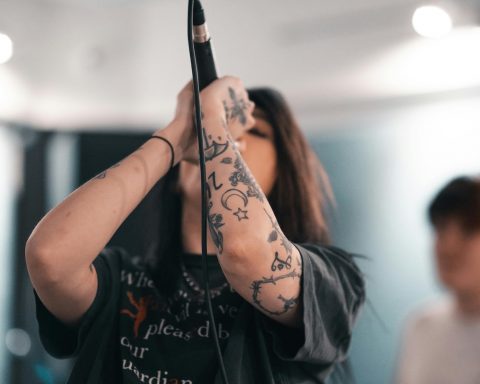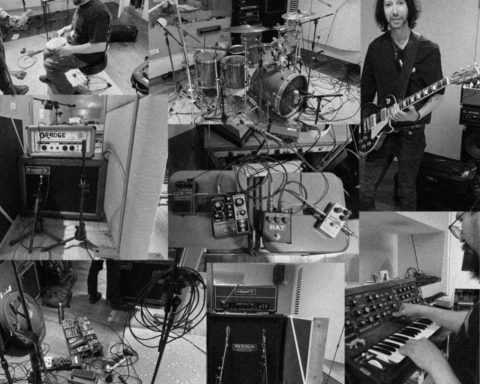Are you a beginner jazz pianist looking to improve your improvisation skills? Triad pairs are an excellent way to get started. It’s vital to learn the basics of using triad pairs in jazz piano improvisation and how they can help create exciting and unique sounds. This helps to bring a feeling of creativity and exploration into your playing while also allowing you to learn the fundamentals of jazz harmony.
Let’s cover some tips on how to practice and apply these sounds in your playing. So if you’re ready to take your jazz improvising abilities up a notch, read on for our guide on improvising with triad pairs.
Chord Substitutions and Voicings
A standard technique jazz pianists use is substituting an I chord with a III or VI chord and vice-versa. This is especially useful when playing standard jazz tunes, as it can add an exciting and unique sound to your work. A popular approach to soloing by jazz musicians is considering the diatonic chords of the scale and substituting using IV, III, or VI chords. In terms of chord voicings, you can also use different shapes to give your solo a unique flavor. This includes playing rootless voicings (i.e., drop 2 and drop 3), quartal voicings (stacking 4ths instead of 3rds), and shell voicings (root notes with a 3rd and 7th).
When practicing this technique, use the same triad pairs from before (I – VI) to create block inversions for each chord. Then try to create exciting voicings by playing the same notes in a different order (e.g., root – fifth – third instead of root – third – fifth). It will help you develop your understanding of jazz harmony and better grasp how to use triad pairs for improvisation.
You can sometimes substitute an I chord with an IV or V chord, which will give you more options for creating interesting sounds. Remember to use the same triad pairs when doing so, and practice slowly until you understand how these chords work together.

Block Inversions
It is a great way to practice and master the basics of using triad pairs. Start by playing a root position chord (i.e., I) followed by the first inversion of that chord (i.e., VI). Then move to the second inversion (III) and back to the root for one complete cycle. This is called a “block inversion,” It is an excellent way to practice switching between chords quickly and accurately.
Creating block inversions with different triad pairs allows you to explore various sounds and rhythms while developing your jazz piano improvisation skills. Remember that the key here is to practice slowly to master the basics before applying them in real time.
It’s a common mistake for novice jazz pianists to try and tackle too much at once without taking the time to understand each component of their playing. Focus on one thing at a time, like creating block inversions with triad pairs, before moving on to something more complex.
Chord Scales
Once you have a good grasp of using triad pairs for block inversions, you can apply them with scales. It’s a great way to expand your improvisation skills and use triad pairs to create interesting progressions while soloing.
Start by playing through different chord scales (i.e., Major, Minor, etc.) using the same previous triad pairs. This will help you practice switching between chords quickly while also developing your understanding of the different sounds and tonalities available to you when soloing.
For example, if you’re playing a Major scale in C (C – D – E – F – G – A – B), try using root position triads for the root and fifth of each chord (C – G, D – A, E – B).

Feel of the Form of the Song
This is where you can start to express yourself and bring your unique style into the music. When soloing with triad pairs, focus on the feeling of the form of the song. This means you can take some liberties with the chord changes while still staying true to the overall feel of the piece.
There are instances when using a specific triad pair can bring out the essence of a song, so keep your ears open and experiment. This will help you learn how to use chord voicings to bring out the emotion in each piece while soloing and help you improve your jazz piano improvisation skills over time.
As you concentrate on the song’s nature, keep in mind the chord progressions. This is a great way to build your improvisation style and transfer knowledge from each tune you play to another.
Arpeggios
Try implementing arpeggios into your playing to take your improvisation skills to the next level. It’s a great way to add more complexity and color to your soloing while also helping you develop an ear for jazz harmony.
Begin by practicing block inversions with triad pairs as usual, but this time focus on playing through each note of the chord individually. This will help you build up your technique and understand how specific notes interact with each other when soloing.
Once you’ve mastered this concept, try playing through arpeggios using the same previous triad pairs. This will help you create exciting and complex progressions and give you an understanding of how specific voicings sound when playing with a jazz band.
Pattern Practice
This is a great way to develop your technique and timing, as well as help you gain an understanding of how different voicings interact with each other. The right start is practicing simple patterns such as root – third – fifth or root – fifth – third. Try playing these patterns in different octaves and speeds, as this will help you develop a better grasp of jazz harmony.
After being comfortable with simple patterns, create your own and focus on how the notes interact with each other when soloing. This is a great way to gain an understanding of jazz harmony, as well as practice creating interesting progressions with triad pairs.
Consider Half-Diminished and Diminished Chords
Remember to consider using these chords when playing through triad pairs. These chords can add a unique color to your soloing that will help you stand out from other jazz pianists.
Just remember to practice slowly and focus on how these chords interact with each other when soloing. Also, practice using block inversions with these chords, as this will help you understand how specific voicings sound when playing with a jazz band.
For more creativity, try playing through arpeggios with these chords as well. This will give you an understanding of how specific notes interact with each other when soloing, as well as help you create exciting and complex progressions.
Learn the Half-Chord Approach
The half-chord approach is excellent for adding more complexity and color to your soloing. This technique involves playing through the first three notes of each chord (root, third and fifth) instead of just two notes.
This can create exciting voicings that may not be possible when using triad pairs alone. Just remember to practice slowly and focus on how these voicings interact with each other when soloing. Also, practice using block inversions with these chords, as this will help you understand how specific voicings sound when playing with a jazz band.
While you may find the half-chord approach challenging to master, it will become easier with practice. Remember to keep your focus and be patient while learning this technique, as it can open up a world of possibilities when soloing.
Try Dominant 7th Chords
This is where you can start to get creative. Try substituting I chords with dominant 7th chords to create more exciting sounds and progressions. Remember to use the same triad pairs from before, as this will help you understand how these voicings interact with each other when soloing.
Also, practice using block inversions and arpeggios with these chords as well. This will help you develop your technique and understand how specific notes interact with each other when soloing.
The best trick is checking the chord chart to find which notes to play. This will help you gain an understanding of how dominant 7th chords collaborate, as well as help you create exciting progressions with your triad pairs.
Perfect on Voice Leading
The melodic phrases need to always be in time and tune. Improvising with triad pairs requires you to be able to read the music while playing. This process is known as voice leading, allowing you to see the notes that the other members of your jazz band are playing.
A modern approach plays the same triad pairs but in a different order. It may be tempting to play the same notes over and over, but if you can master the art of voice leading, your playing will stand out from other jazz pianists. To practice this technique, take a simple melody or chord progression and try to re-harmonize it with triad pairs.
By following the tips in this article, you’ll better understand improvisational jazz piano. From learning right-hand triad pairs and block inversions to incorporating half-chord and dominant 7th chords, these techniques will help you become a more well-rounded jazz pianist. Just remember to practice slowly and focus on how specific notes interact.














